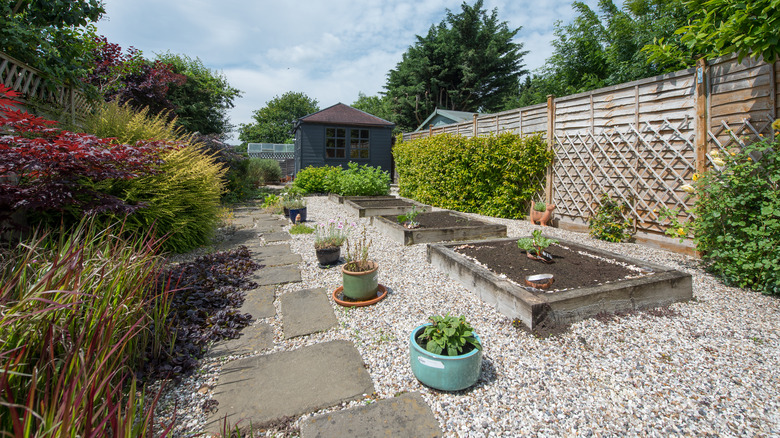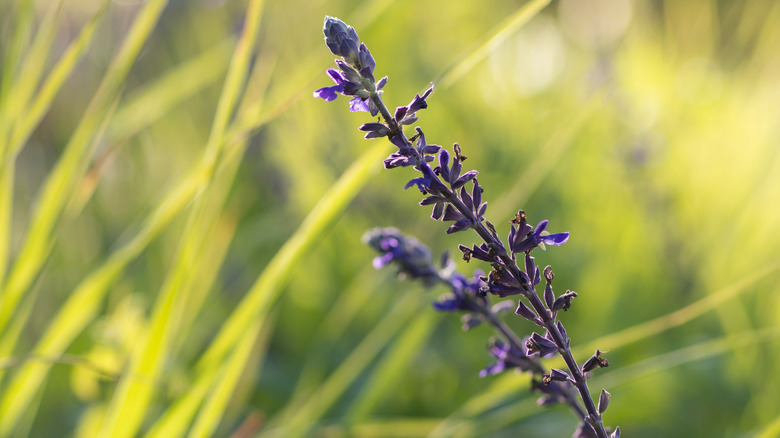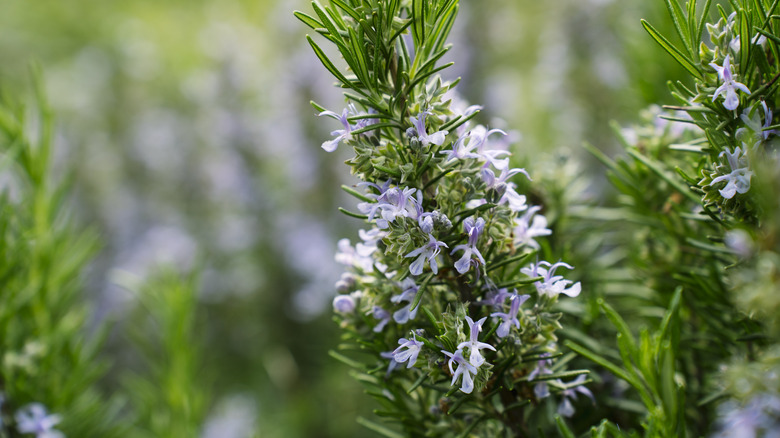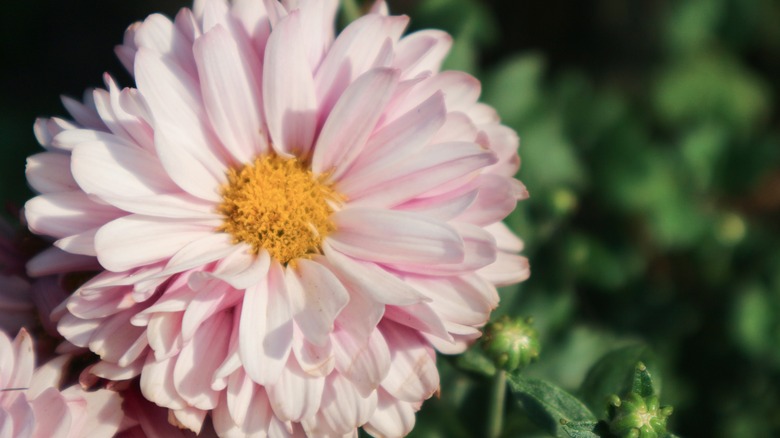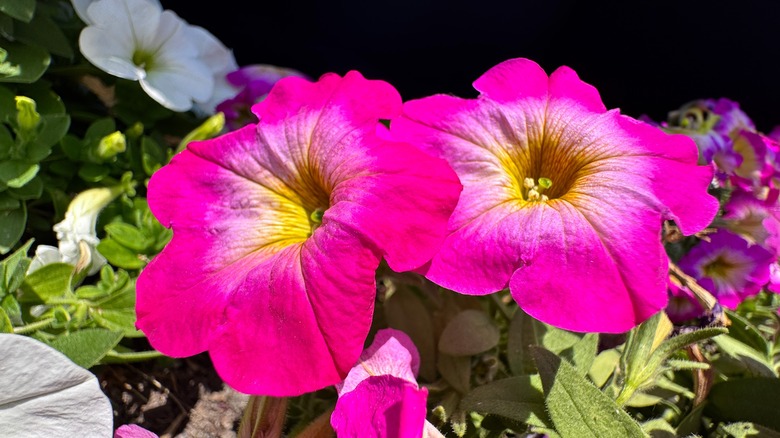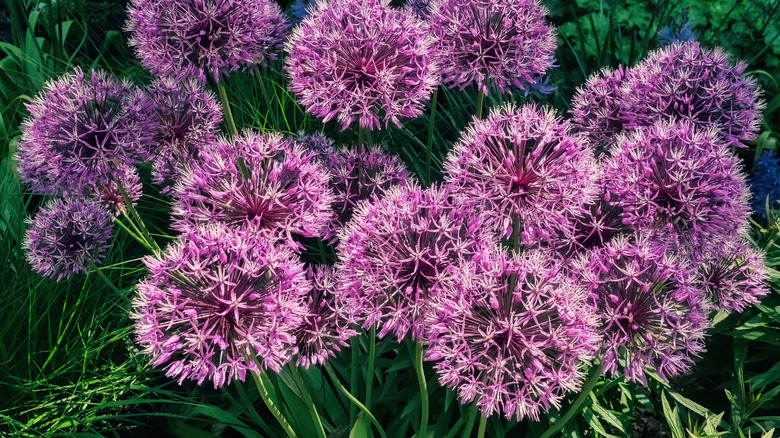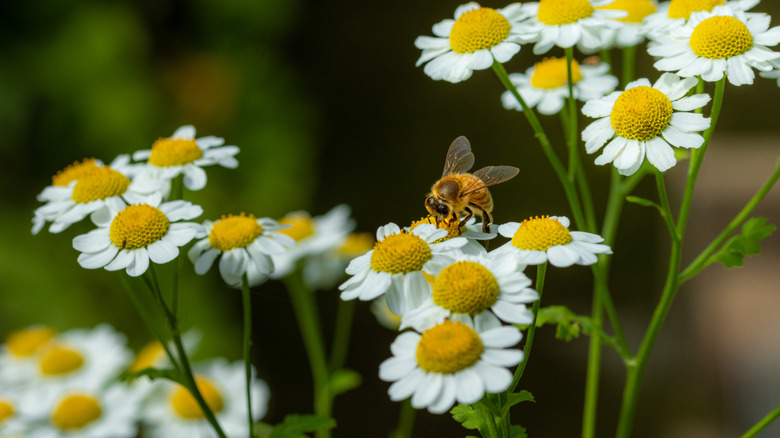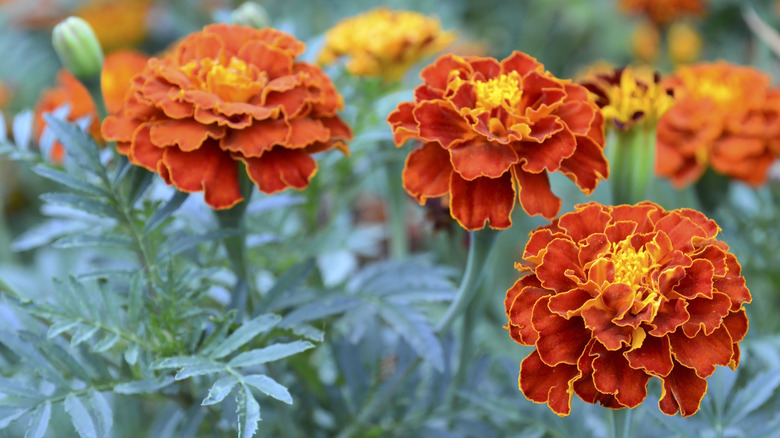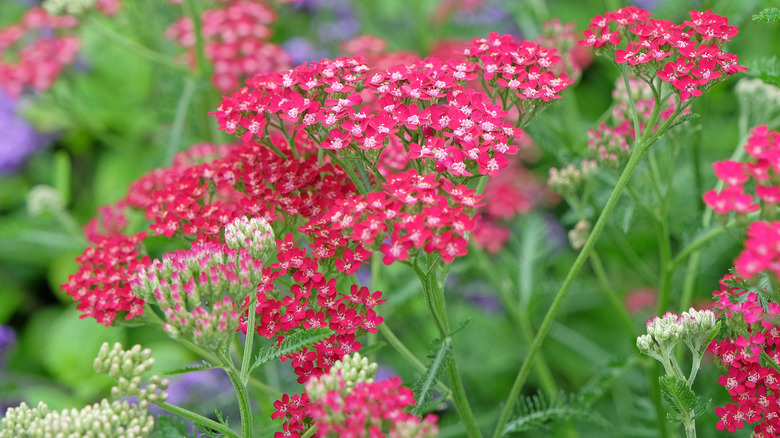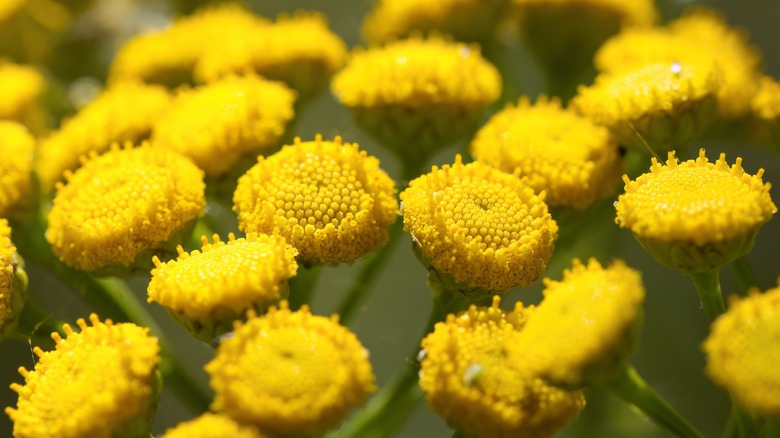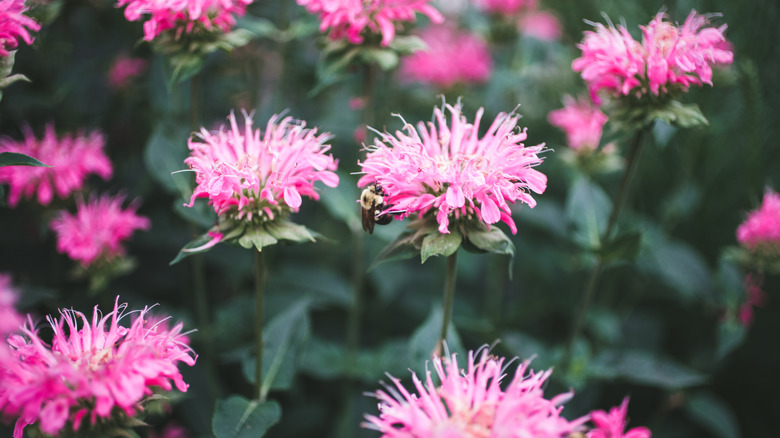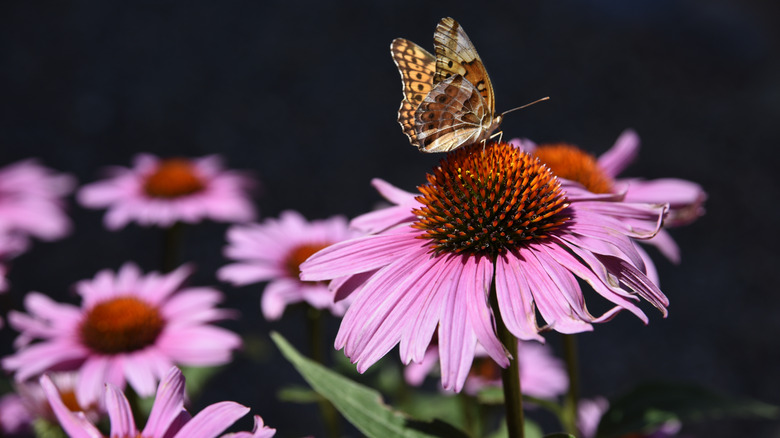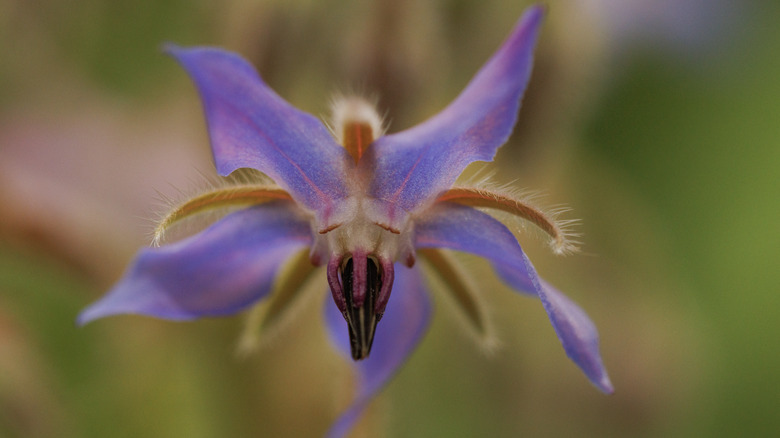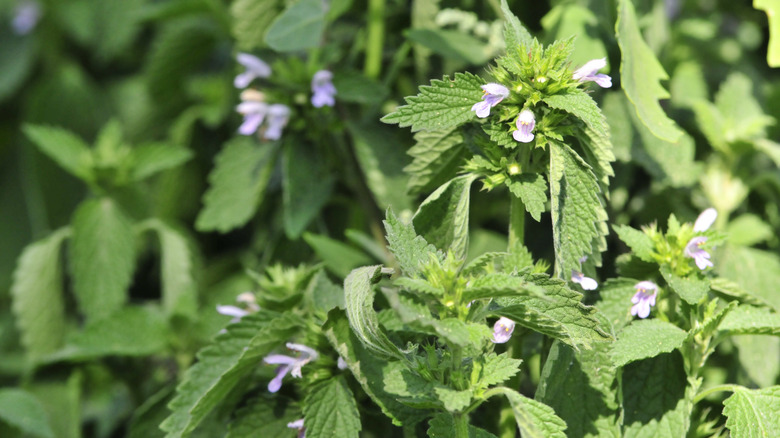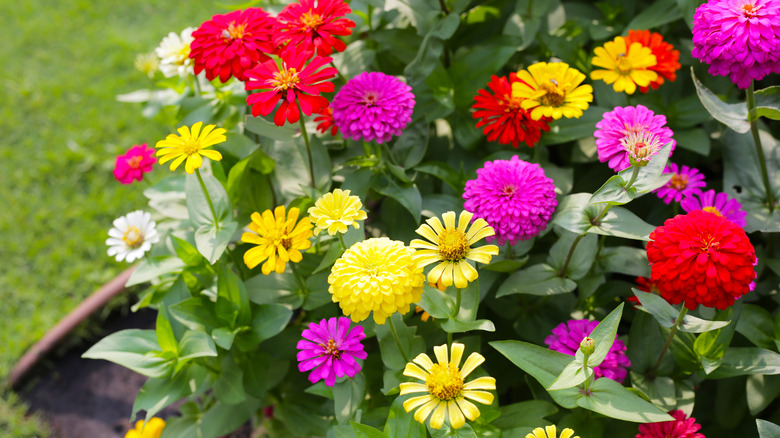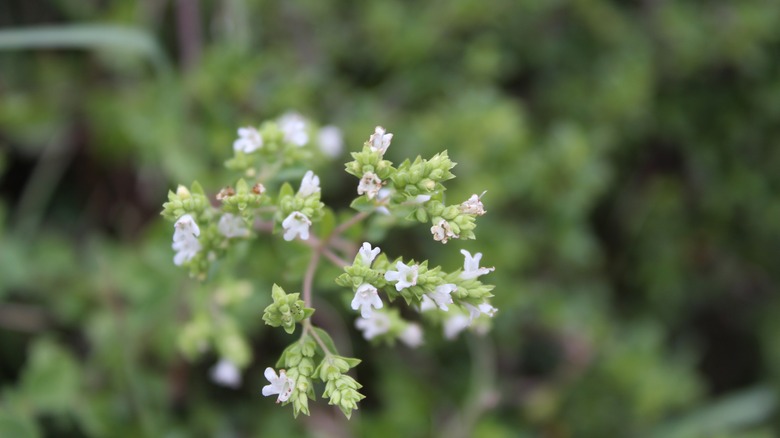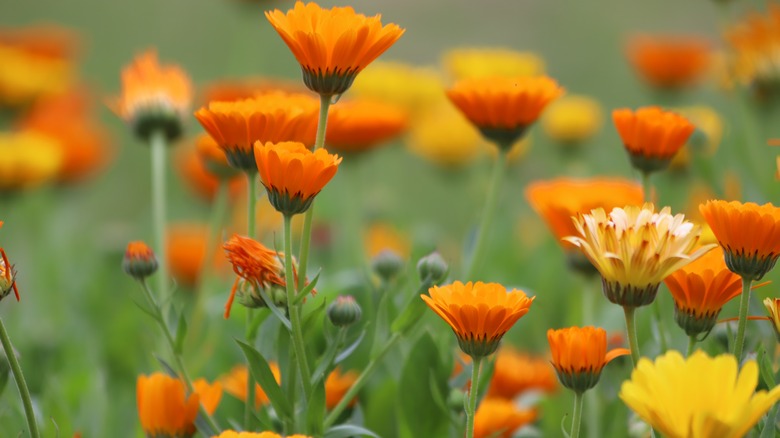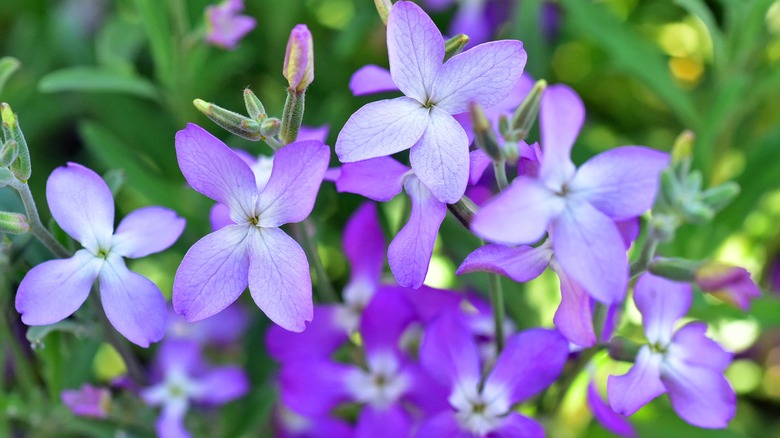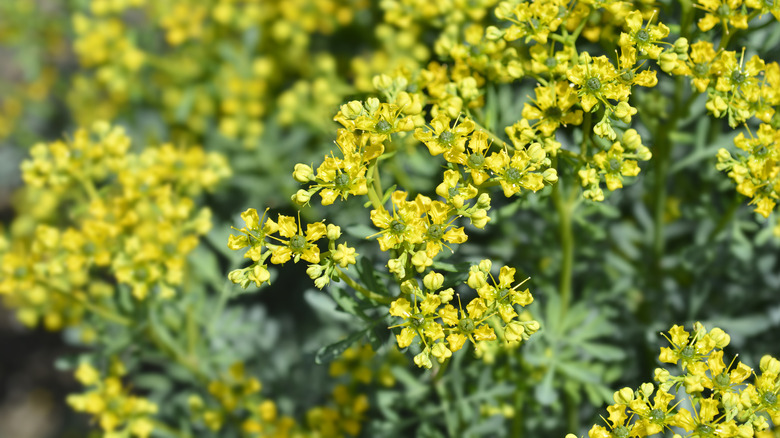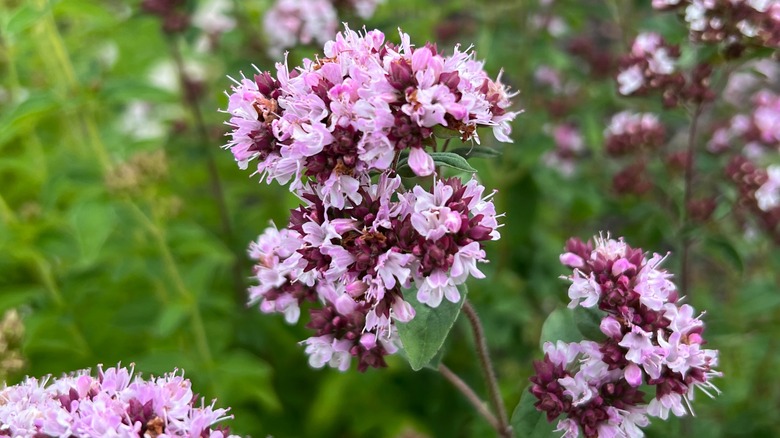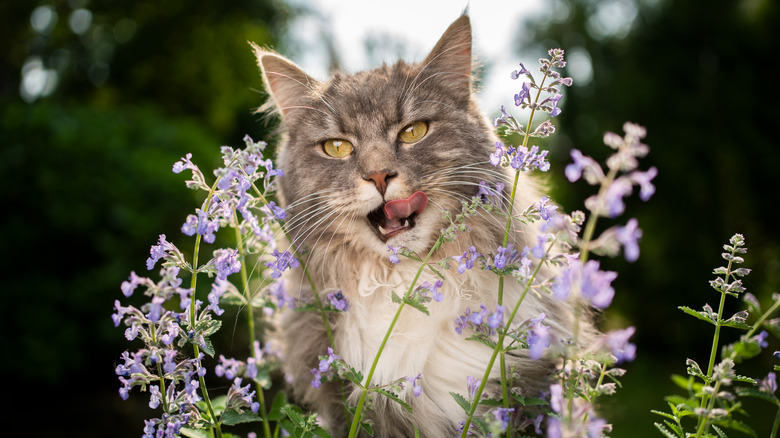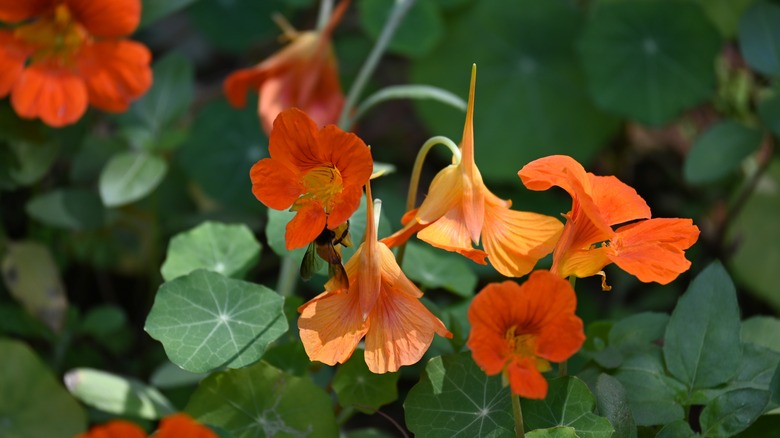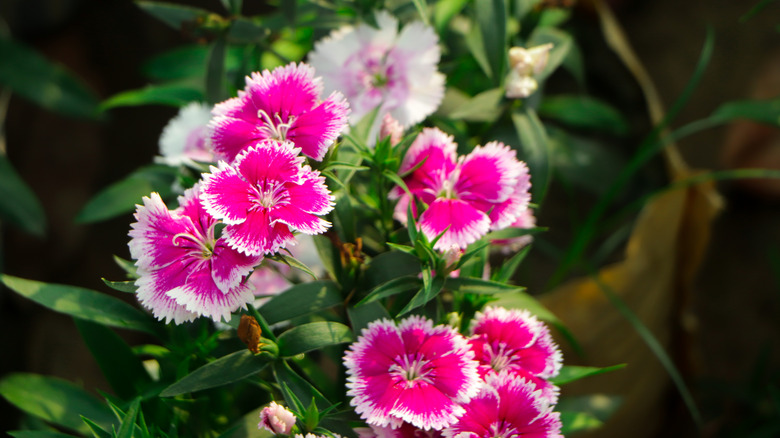24 Flowers You Can Grow To Naturally Keep Bugs Away From Your Home
The goal of planting and caring for a vibrant and beautiful garden is to be able to admire it. But picture yourself gazing at your garden from the inside, and mosquitoes and other annoying pests are swarming around your windows ready to make a meal out of you. Spotting and swatting mosquitoes while you're trying to peacefully take in your garden is frustrating enough, and don't get us started on the tiny invaders leaving holes and gnaw marks everywhere. The worries of pests interfering with both your garden and home are all too real. That's why it pays to be strategic about what you plant.
The last thing you want to do is just grow flowering plants for how beautiful they are and not consider how they can benefit you. Sure, you can plant what you want and just reach for the most potent bottle of chemical spray, but why not try the natural, plant-based approach first? From familiar and fragrant plants like lavender to uniquely colorful zinnias and pot marigold, there are so many flowering plants that you can grow to keep bugs as far away from your home as possible.
English lavender
If mosquitoes are a concern, English lavender (Lavandula angustifolia), is a flower you'll want to add. The essential oils of these vibrant purple blossoms contain potent compounds like linalool and linalyl acetate, known to have strong mosquito-repelling effects. These plants are hardy in USDA Hardiness zones 5 through 9 and will thrive under full sun and in well-draining chalk, loam, or sandy types of soil. They're also quite low maintenance, so try them out as a natural repellent.
Rosemary
Rosemary (Salvia rosmarinus) shouldn't just be grown to use in your next focaccia recipe. These flowering plants are wonderfully fragrant and a natural insect deterrent with an aromatic scent will keep buzzing pests away from your garden and home. And, these delicate blue blossoms still attract a wide variety of pollinators like hummingbirds and butterflies. They're hardy in zones 8 through 10 and thrive in full sun and well-draining soil. Rosemary is a great companion plant for so many flowering plants such as marigolds, zinnias, and sweet marjoram.
Painted daisy
Not only are painted daisies (Chrysanthemum coccineums) striking as they come in a variety of colors, but they're also seriously functional. These bright blossoms contain an extract rich in natural insect-repelling compounds called pyrethrins. These compounds are known to be effective against a wide range of insects, from mosquitoes to aphids, and are often a key ingredient in many natural alternative repellents on the market today. They're hardy in zones 3 through 7 and thrive in full sun with moderately moist, well-drained soil. They shouldn't consistently be in wet, heavy soils as there's a chance of root problems.
Garden petunia
Garden petunias (Petunia x hybrida) aren't just heat-tolerant trailing plants that thrive in full sun – they're also natural pest deterrents. While these low maintenance blossoms may not have the ability to fully eliminate pests, it's said they do a pretty good job at repelling the most annoying ones like mosquitoes and aphids. Their mildly sweet scent with a hint of anise can be delightful to people, but it's a scent that's unappealing to common garden pests. These annual blossoms come in a variety of vibrant colors do best in full sun.
Ornamental onion
Ornamental onion flowers (Allium giganteum), like other blossoms in the allium family, have a garlicky-onion scent that many garden pests find off-putting, making them the perfect blossoms to plant to keep insects away. And not only does their scent repel annoying pests, but their globe-shaped blooms will add a uniquely beautiful element to your garden. Ornamental onions have average water needs and are hardy in zones 6 through 10, thriving even in areas prone to drought. They're also great companions to many other flowers, which makes them an easy and attractive addition to your garden bed.
Golden feverfew
Not only are golden feverfews (Tanacetum parthenium) a cheerful addition to your garden, these blooms that many confuse with daisies have pyrethrin in their leaves and can naturally repel common pests, like moths, mosquitoes, flies, and maybe even cockroaches. Planting these blossoms in areas within zones 4 through 9 can help keep both your garden and home bug-free. Pollinators love golden feverfews, and if you like bird-watching, these are perfect because they attract hummingbirds as well. They favor well-drained loam and sand type soil, require average maintenance, and even do well in areas with drought.
French marigold
French marigolds (Tagetes patula) are gorgeous blossoms that'll remind you of the many hues of a golden hour sunset, but they can also benefit your garden in so many ways. You won't regret planting these edible flowers as they'll also act like the strict bouncer to the perimeters of your garden and home, attracting all the beautiful butterflies but helping to keep the mosquitoes away. They've got a bold, spicy scent that mosquitoes hate, making them a fragrant shield for your garden and home.
Yarrow
If you're worried about your dogs and cats playing in the yard and bringing home ticks, yarrow (Achillea millefolium) is a stunner with feather-like leaves that you'll want to plant in your garden. Planting these blossoms that grow in beautiful clusters will keep ticks and even mosquitoes at bay. These are hardy in zones 3 through 9 and thrive in full sun in chalk, loam, and sand type soil. The best part about these blossoms? You have several colors to choose from.
Tansy
Originating from the United Kingdom, tansy (Tanacetum vulgares) is a golden yellow button-shaped flower that can be toxic. But despite this major downside, people plant it for its ability to deter mosquitoes. The secret? The oil it produces has a natural compound called thujone, which is what deters not only mosquitoes, but fleas and flies, too. Plant these and you'll find some relief from those unwelcome visitors buzzing throughout the house. Tansy flowers are hardy in zones 3 through 8 and can even tolerate drought.
Bee balm
Bee balms (Monarda) are perennial flowers known for their vibrant blooms and natural insect-repelling abilities. These blossoms, which will surely remind you of pom poms, simply need to be planted and once they're grown they'll do the work and release a natural scent that drives mosquitoes away. Bee balms are hardy in zones 3 through 9, making them suitable for a variety of climates. These shaggy brush-like blossoms will add a playful pop of color in any garden as long as you allow them to grow in full sun to partial shade in well-drained soil.
Purple coneflower
Purple coneflowers (Echinacea purpureas) are just one of the many stunning varieties of coneflower you could be growing in your garden. They're not just stunning, though — they're also a feast for pollinators. Their prominent central cones attract the most beneficial insects to your garden like predatory wasps and ladybugs, which keep pest populations in check. Plant these blooms near windows or entryways and you may be able to create a buffer to discourage smaller pests from making their way indoors. Purple coneflowers are hardy in zones 3 through 8 and they're tolerant to factors like heat and drought.
Borage
Similar to the purple coneflower, borages (Borage officinalis) are a magnet for beneficial insects. These beautiful star-shaped blue blossoms will invite predatory wasps and hoverflies to your garden and keep common pests in check. Plant these and you'll be able to reduce annoying pest populations around the perimeters of your home. These edible flowers thrive in a variety of soils from chalk to sand as long as it's well-drained. They're also known to be a soil-enriching plant, so go ahead and add these to your list of flowers to grow.
Lemon balm
Hence their name, lemon balms (Melissa officinalis) are lemon-scented flowers and leafy plants that will brighten up your garden, but will also help keep mosquitoes and flies far away from your home. Mosquitoes don't really like citrusy scents, so these are the perfect blossoms to plant if your area has a mosquito problem and you want to shoo them away. They are hardy in zones 3 through 7 and are very low maintenance as long as they're deeply watered one to two times a week in well-draining soil.
Zinnia
Zinnias will also summon a host of helpful insects to your garden, keeping potential household pests at bay. Not only do zinnias attract butterflies, but hummingbirds love them, and they're known to snack on mosquitoes, gnats, and tiny spiders. So, while these vibrant blooms may not hold any insect repelling traits themselves, the hummingbirds they bring to the yard will keep household pests at bay. They thrive in well-drained clay, loam, and sand type soils and come in all kinds of shapes and colors.
Sweet marjoram
Sweet marjorams (Origanum majorana) may not look very special, but they'll make excellent bordering flowering plants. Not only are they perfect for borders, they produce natural oils like terpenes and phenolic compounds and they have a strong scent that many flying insects like mosquitoes and flies can't stand. The scent is often so strong that it'll overwhelm the flying insects' sense of smell and discourage them from swarming around your house. Sweet marjorams are hardy in zones 9 through 10 and thrive in full sun. A fun fact is that people still use sweet marjorams around the world to make natural medicines.
Pot marigold
Pot marigolds (Calendula officinalis) aren't just perfect for filling gaps in your garden, once you plant them they'll also work as pest repellents for your garden and home. Although used in many perfumes for its delicately sweet scent, many pests aren't fans of it, and you'll be able to keep flying bugs like flies and blood-sucking mosquitoes away. Parts of pot marigolds can be eaten with the leaves often being used for garnishing and steeping tea. They thrive under full sun but can use partial shade during the hottest times of the day.
Night-scented stock
Once the sun sets, night-scented stocks (Matthiola longipetala) step up their game and give off a perfume-like scent. Not only do these beautiful blossoms with different purple hues make for an outstanding companion flower for your garden bed, but its scent works to keep mosquitoes away from your home. Night-scented stocks are fairly easy to grow and are considered to be low maintenance, although they need to be in moist but well-draining chalk, loam, or sand-type soil. Plant these near benches or patios so you can enjoy them without being bitten by mosquitoes.
Rue
Rue (Ruta graveolens) is a flowering plant that grows in clusters and has a pungent scent so strong bugs don't really like to come near it. This is a great plant to grow in your garden if you're looking to add a good bordering flowering plant that also wards off annoying bugs. They're also quite resilient and can even survive when soil conditions aren't ideal, but they are poisonous to humans so you'll want to keep children away and visitors informed. Rues are hardy in zones 4 through 10.
Oregano
Another herbaceous plant that flowers is oregano (Origanum vulgare). These plants repel a variety of bugs, including mosquitoes. They're often grown with rosemary, sage, thyme, and basil to use in recipes, but growing all of them together will also create a serious barrier that protects your home from mosquitoes. Oregano thrives in full sun with well-draining soil, and they're hardy in zones 4 through 10. And you'll also admire the flowers on this plant as they bloom in clusters that range in the prettiest shades of pink and lavender.
Catnip
Another flowering plant that is effective at repelling mosquitoes is catnip (Nepeta cataria), and these are backed by scientific research. Catnip contains nepetalactones that may allure cats but it sets off a sensory alarm in mosquitoes that makes them want to stay far away. Plant catnip in your garden or a pot near your window for a pleasantly fragrant and effective mosquito repellent. These flowering plants are hardy in zones 3 through 7. If you have cats, prepare to have your kitty wanting catnip all day.
Nasturtium
Nasturtiums (Tropaeolum majus) will remind you of hibiscus with their vibrant colors and trumpet-shaped blooms. But unlike hibiscus, these blossoms have the ability to naturally deter pests by releasing a natural scent that keeps insects away, similar to bee balm. On top of this, they're fairly easy to grow and will thrive in some tough conditions. Nasturtiums come in many colors that you can choose from to brighten up your garden.
Carnation
Carnations (Dianthus) have a strong warm vanilla and clove scent that we humans may love, but insects just aren't crazy about. This allows them to be a natural repellent for various bugs. A fun fact about these gorgeous frilly, multi-petaled blooms is that they're given to parents to celebrate parents' day in South Korea. These blossoms are hardy in zones 4 through 9 and they like to be in clay, loam, and sand-type soil and should be under full sun. You will want to be cautious with little ones around these blossoms as if they're consumed, they can cause an upset stomach.
